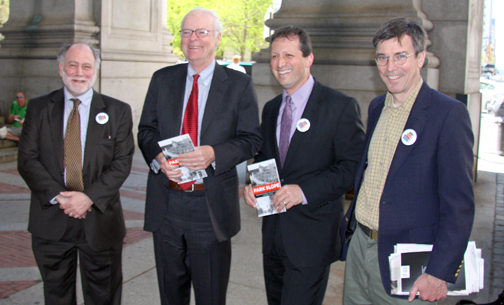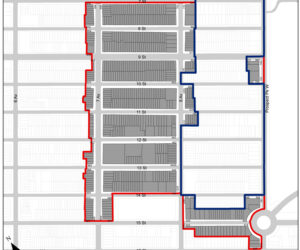The Landmarks Preservation Commission has voted unanimously to approve an expansion of the Park Slope Historic District, making it the largest such zone in the city.

The April 17 vote grants historic-district protection to 580 buildings in the South Slope, giving “long overdue recognition” to this part of the neighborhood, said Peter Bray, chair of the Park Slope Civic Council’s Historic District Committee. The expansion reflects five years of advocacy and outreach by the Civic Council, which has entailed efforts by dozens of volunteers and the full support of its elected officials.
The extension stretches from approximately Seventh Street to 15th Street, from Seventh to Eighth Avenues, and along 15th Street from Eighth Avenue to Prospect Park West and Bartel Pritchard Square. (The new extension includes the Pavilion Theater, whose owner sought to exempt it from the district, thereby ensuring the building’s survival.) The expanded district now totals 2,575 protected buildings, surpassing the 2,315 structures in the previously largest historic district, in Greenwich Village.
In addition to its iconic brownstones, the South Slope includes the Ansonia Clock Works, once the world’s largest clock factory, as well as blocks of rowhouses for the workers who produced its famous clocks. LPC’s action, said Bray, celebrates “not only an important part of the city’s storied industrial past but also the contribution that sensitive adaptive reuse can make toward preserving its vitality and historic character.”
Protections afforded by the designation went into effect after the vote (learn more about those rules at the LPC’s website to learn more about those rules, or download the LPC’s full report here). City Council approval of the new district, the next step in the process, is virtually assured.
“We are honored to have the Landmarks Preservation Commission recognize our historic and unique neighborhood,” said Councilmember Brad Lander, a long-time supporter of a larger local historic district. “These are some of the most beautiful streets in New York and, with today’s vote, we know they will be enjoyed by generations to come.”

This expanded historic district could not have come about without the Civic Council’s leadership, the sustained support of all of our local elected officials, and the involvement of hundreds of homeowners who did not want to see Park Slope’s character sacrificed for the new development that has swept through nearby blocks.
The next phase of the expansion effort is focusing on blocks in the North Slope, which include many of the neighborhood’s oldest structures.
The historical and architectural integrity of Park Slope remains an ongoing concern of the neighborhood, Bray noted. “Hundreds of additional buildings above Fifth Avenue deserve to be incorporated into a much larger Park Slope Historic District. The Civic Council will not rest until it achieves its goal of preserving the historic character of our neighborhood.”
To learn more or get involved, visit our Historic District page.
— Peter Bray chairs the Historic District Committee and is a Civic Council trustee-nominee.
from the Spring 2012 Civic News

